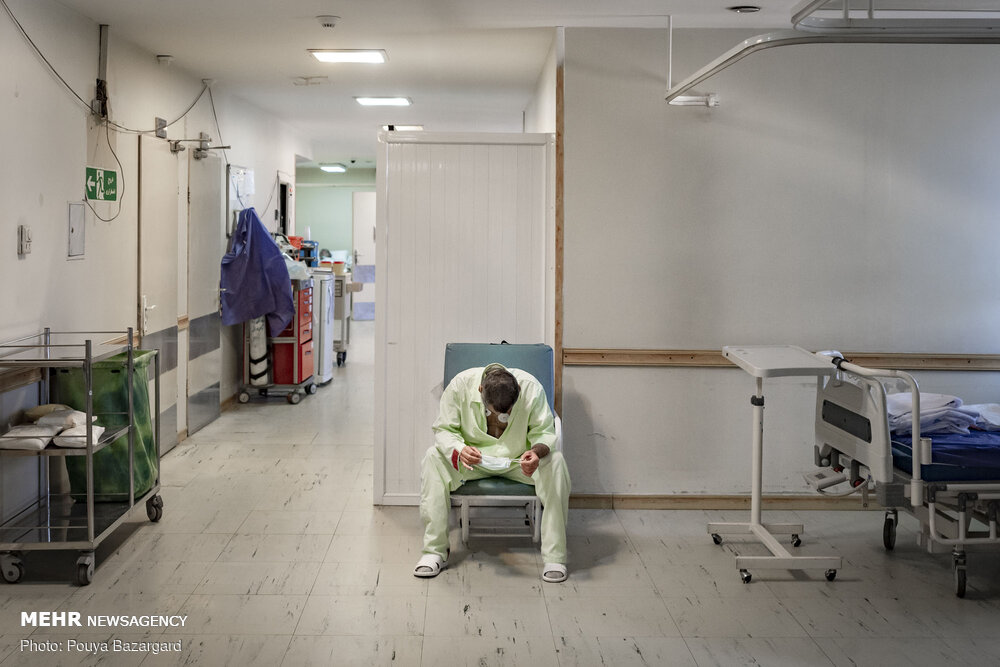The healthcare sector consumes a large portion of households’ income, from hospitalizations to dentistry. Neither the drug assistance plan nor the media slogans of officials have been able to help the patients. According to government officials, more than 50% of household income is spent on housing. The remainder is left for other expenses such as food, transportation, and health. However, healthcare costs are so high that some people even forego parts of their treatment.
The struggle among various groups, including the parliament, the Food and Drug Organization, pharmacists, etc., to manage the drug market has been futile. Occasionally, certain drugs become scarce in the market and their prices increase. Sometimes the issue is about special drugs and sometimes about common drugs for widespread diseases.
Warning for patients forgoing necessary medical services
Some patients, due to their illnesses, are regular visitors to hospitals, doctors’ offices, and pharmacies. These are individuals burdened by healthcare costs. However, even temporary illnesses can incur significant expenses for individuals. A single visit to a doctor and purchasing medication can consume a large portion of a person’s income.
The Research Center of the Parliament, noting the staggering healthcare costs in Iran, wrote that the absence of an effective system to protect individuals from financial risks not only leads to a significant number of people falling below the poverty line but also increases the likelihood of patients forgoing necessary healthcare services. Consequently, this results in a decline in health levels.
One of the most common approaches to assess financial protection for individuals is examining the indicator of exposure to catastrophic health expenditures. The Research Center of the Parliament regarding this indicator wrote: “According to the World Health Organization, if the total direct payments from household pockets for health are equal to or more than 40% of a household’s capacity to pay, then catastrophic health expenditures have occurred.”
Catastrophic Health Expenditures in Iran
But has Iran experienced catastrophic health expenditures? The parliamentary research arm wrote that, according to the national health accounts data, the average ratio of direct payments by patients out of the total health expenditures between the years 1390 to 1398 (Iranian calendar) was 42.2 percent.
According to Iran’s national health accounts data, 37.4 percent of the country’s health expenditures in the year 1398 (2019/2020) were made through direct payments. This is while the global average of this indicator in 2019 was 18 percent, and for countries with high, medium, and low incomes, it was 13.6 percent, 35 percent, and 44.7 percent, respectively. This means that Iran’s situation is worse than that of middle-income countries and close to that of low-income countries.
Medications account for the largest share of healthcare expenses
According to the results of the household income and expenditure survey, on average, 30 percent of the total out-of-pocket payments by households were spent on purchasing medications during the years 1395 to 1400 (2016 to 2021). Dental services and hospital services constituted 19 percent and 17.8 percent of the total out-of-pocket payments by households, respectively.
As the statistics show, medications account for a significant portion of expenses. “Donya-e-Eqtesad” has written about this: “Government debt to pharmaceutical industry stakeholders on one hand, and the severe liquidity reduction in this sector on the other, have caused many investors to refrain from participating in this area.”
Furthermore, the report by “Donya-e-Eqtesad” states that due to the unprofitability of producing drugs and equipment, their supply has decreased, and in recent years, the country has repeatedly experienced drug shortages. If the current problems are not resolved, the number of items facing shortages will increase. However, the result of this struggle is more pressure on the people. What people experience in hospitals, medical centers, and pharmacies goes beyond what is reported or what government officials are forced to respond to.
Outcome of Catastrophic Expenditures: Decrease in Living Standards
The parliamentary research sector also mentioned in its report that the occurrence of catastrophic health expenditures can lead to a reduction in consumption and savings in the short term, as well as asset selling and borrowing, ultimately leading to a decrease in living standards in the long term.
According to the parliamentary research arm, catastrophic health expenditures occur due to three main reasons: first, the high proportion of out-of-pocket payments in healthcare expenses; second, the low income capacity of households; and third, the weakness of prepayment mechanisms and risk pooling in financing healthcare.
Based on officially published reports, the latest survey on the utilization of health services in the country dates back to the year 2015/2016. According to the published statistics, the rate of Iranian households facing catastrophic health expenditures in the year 2021/2022 was 2.41 percent, which is 1.41 percent higher than the target set in the sixth development plan of 1 percent. Therefore, despite the emphasis on financial protection against catastrophic health expenditures in the development plans and national health policies over the years, this goal has not been achieved.










